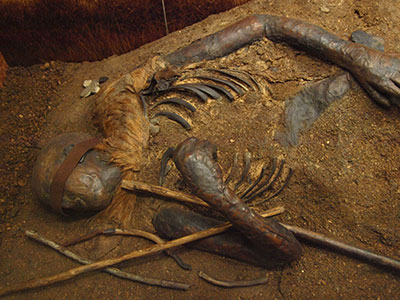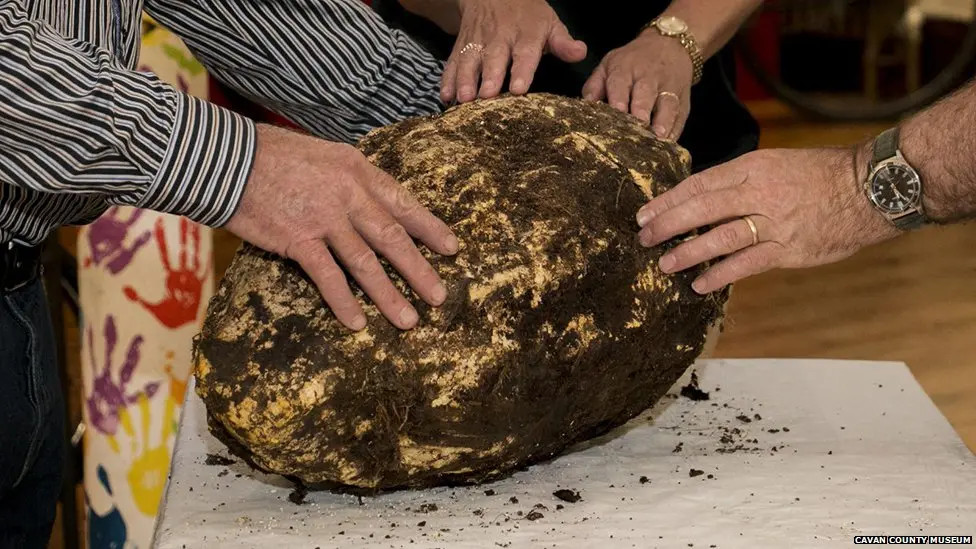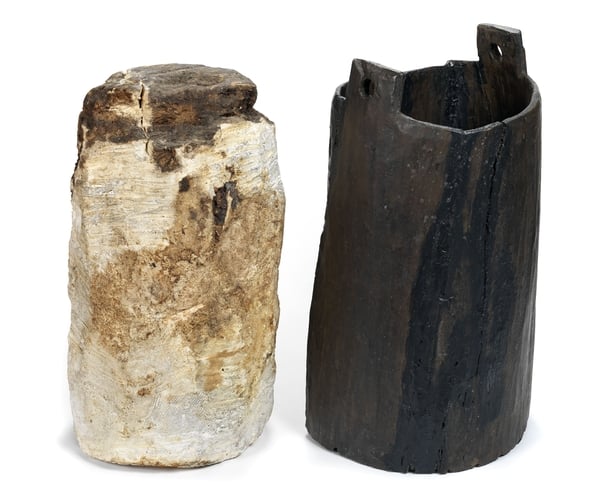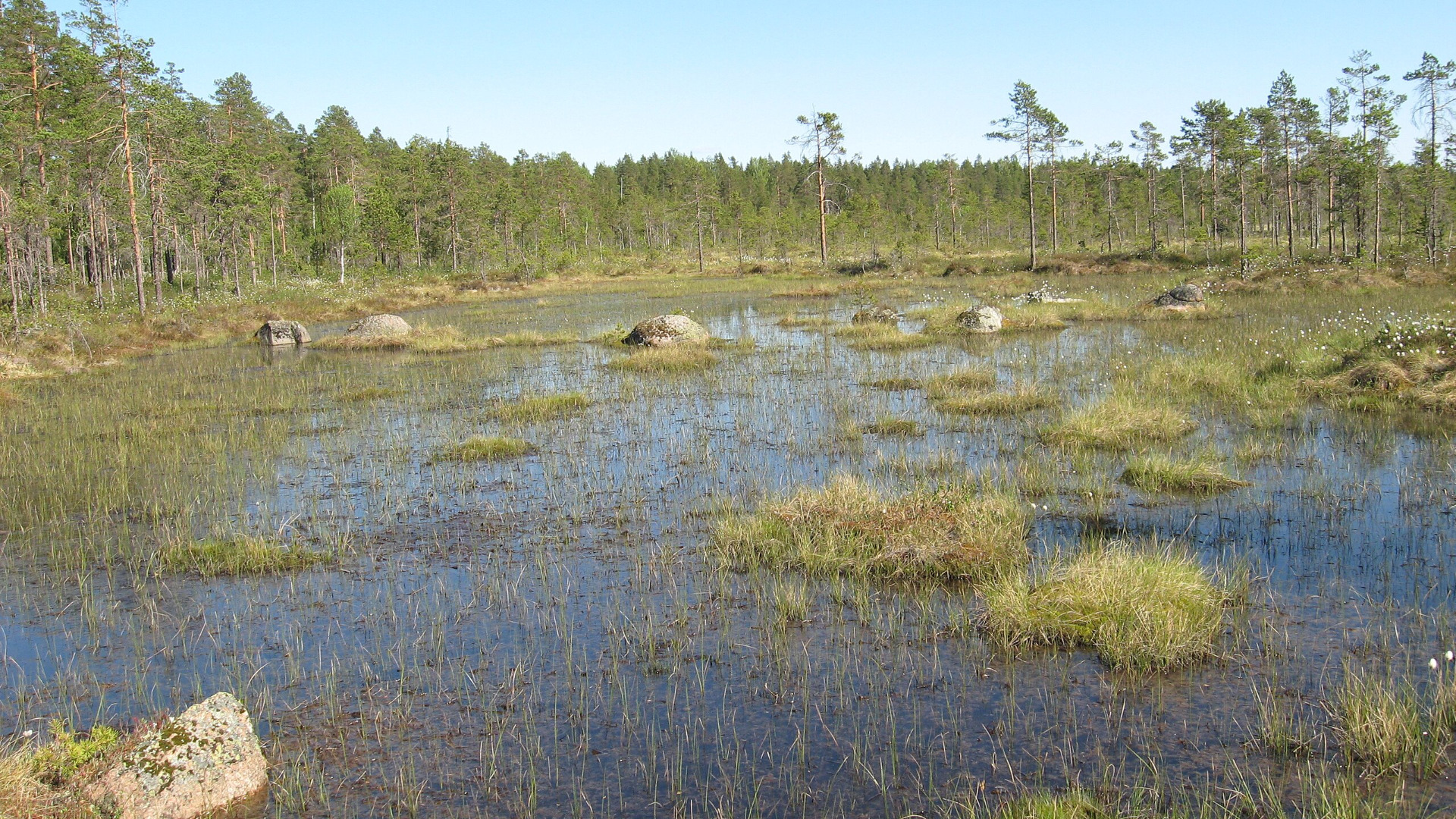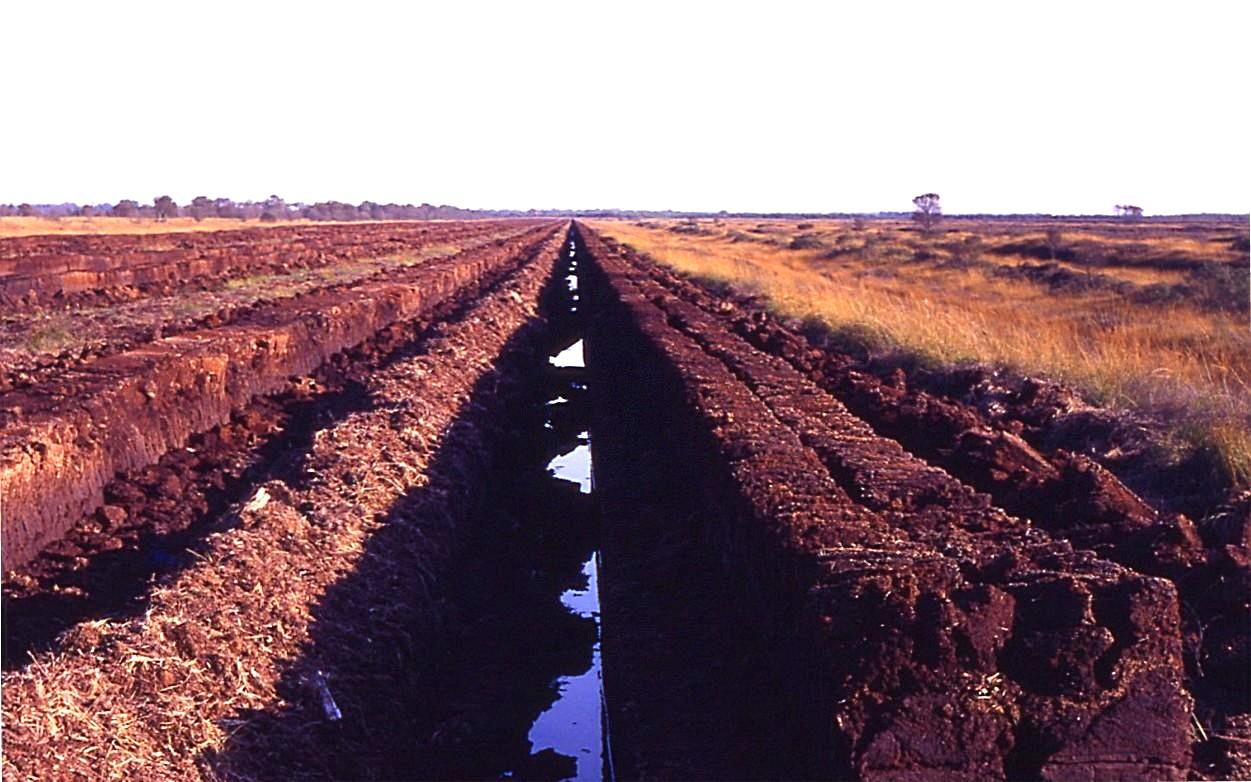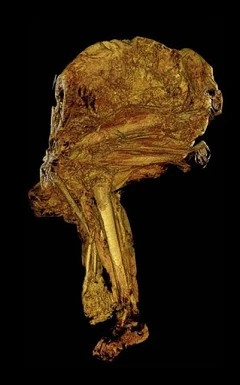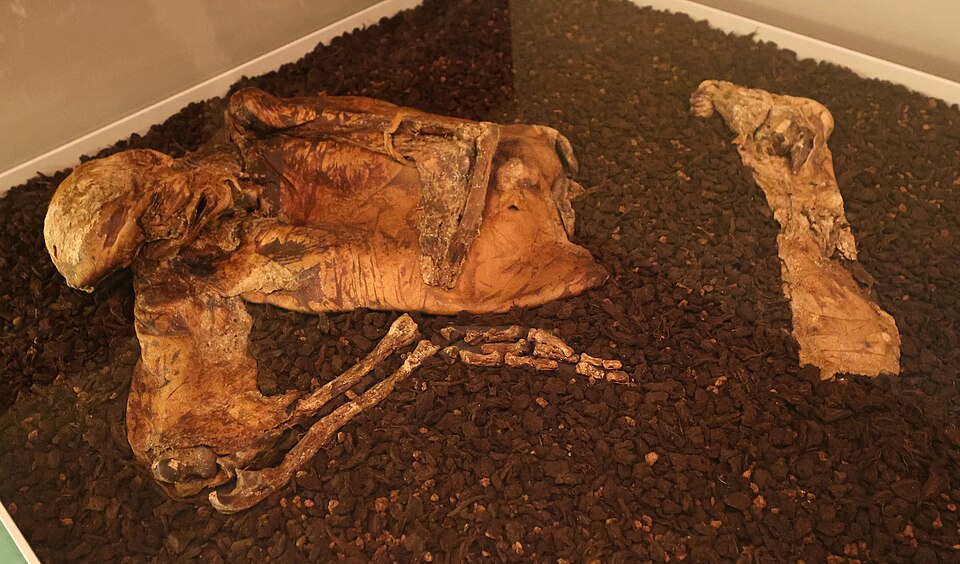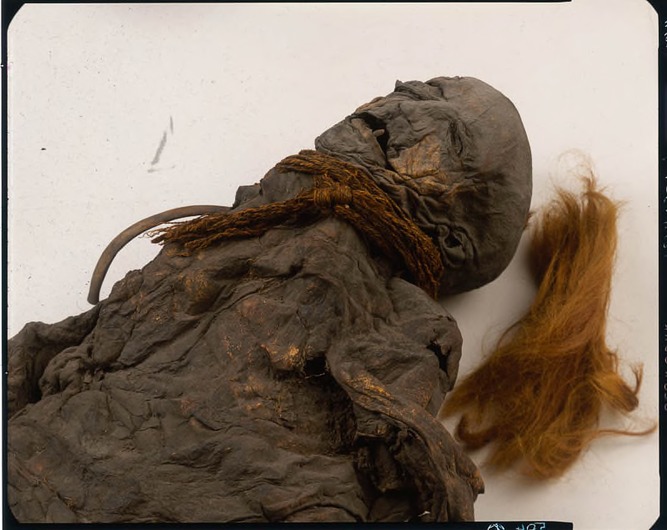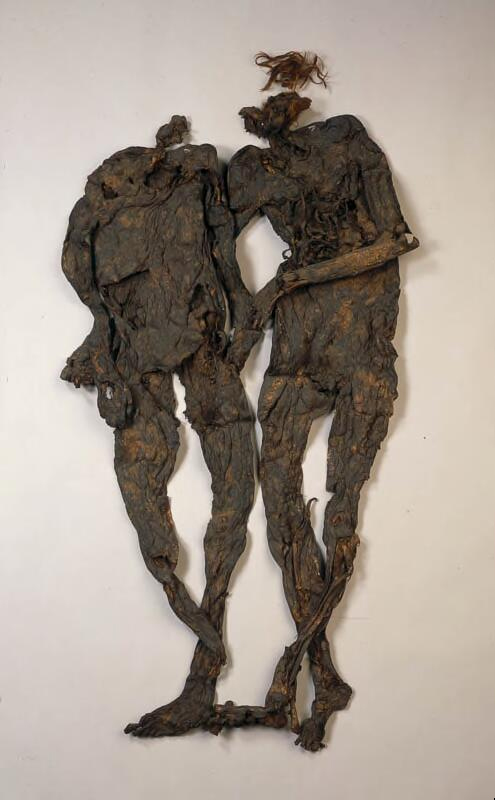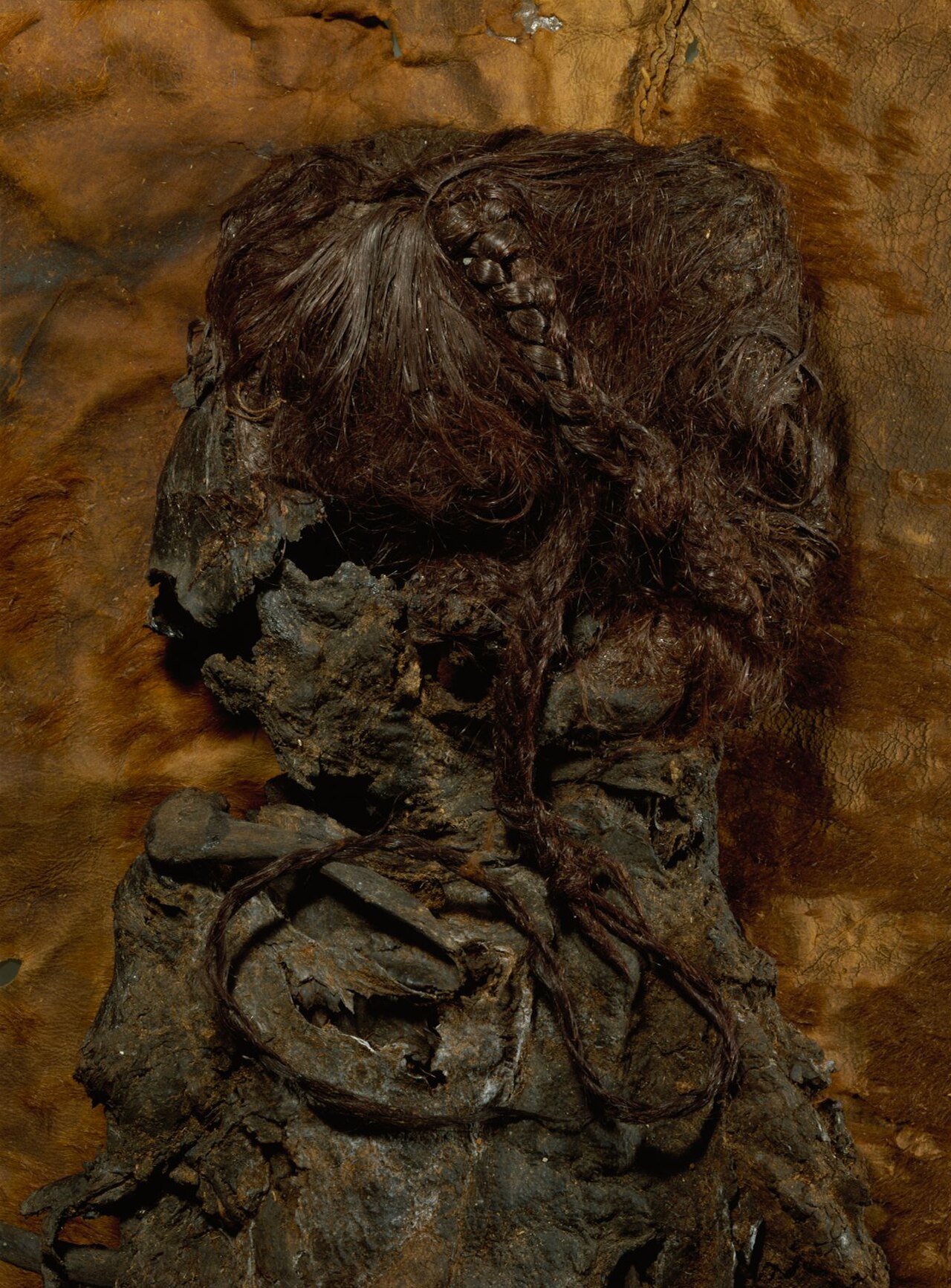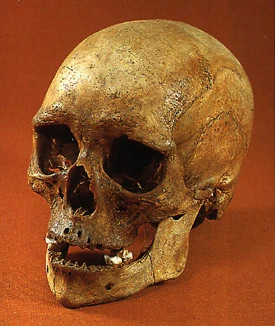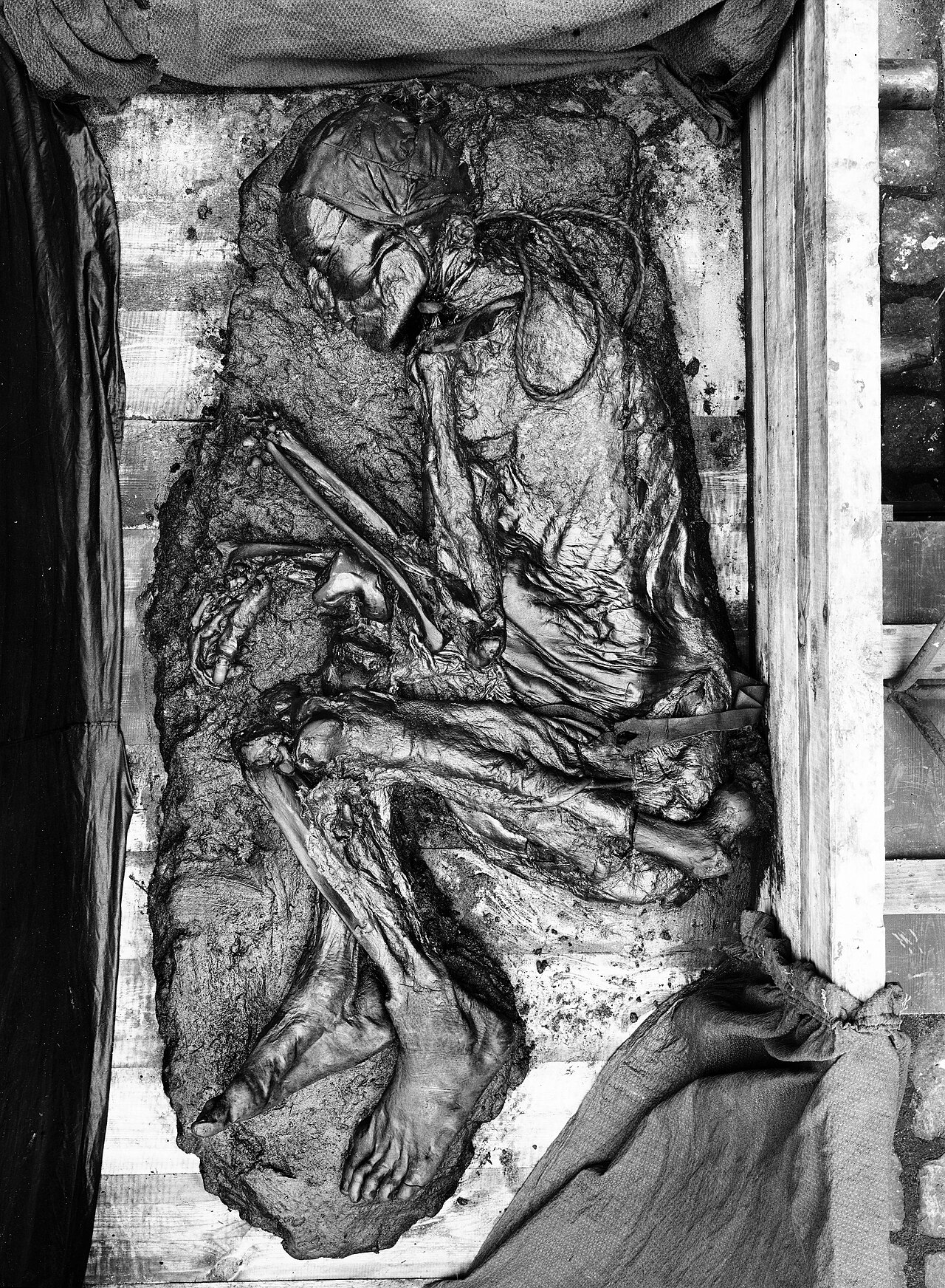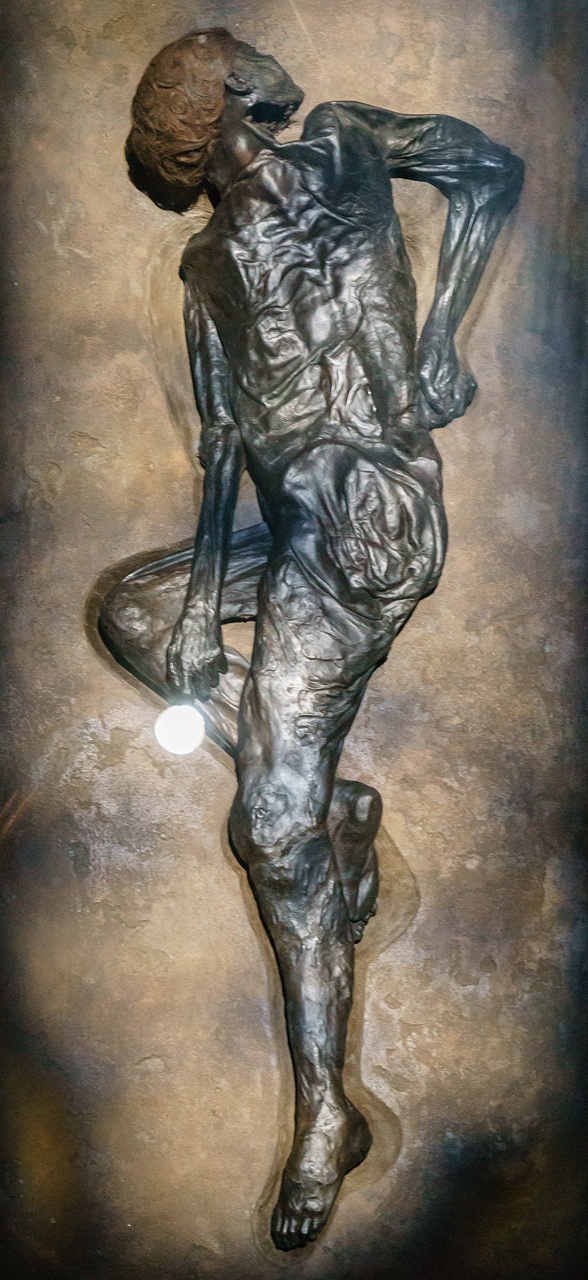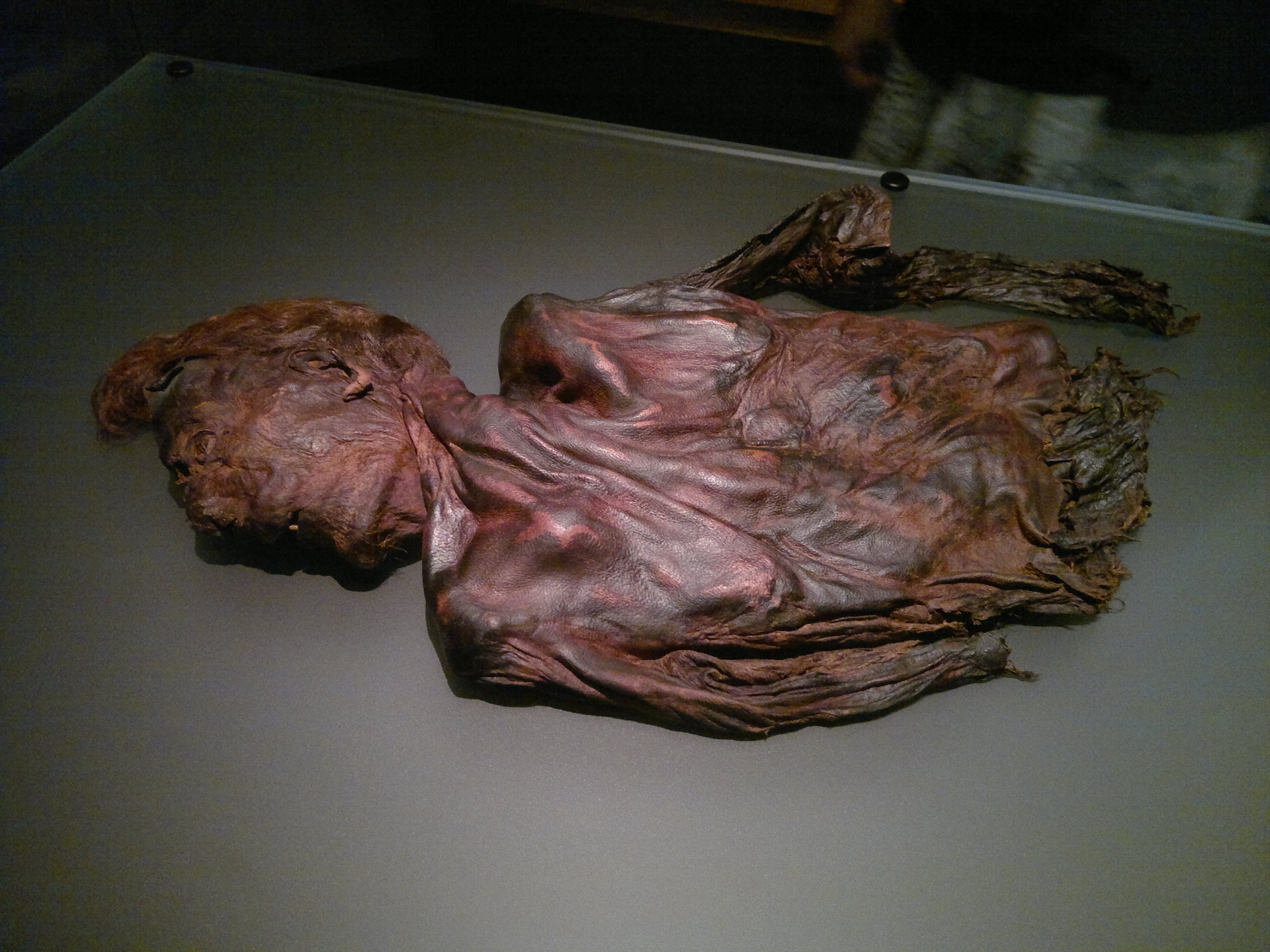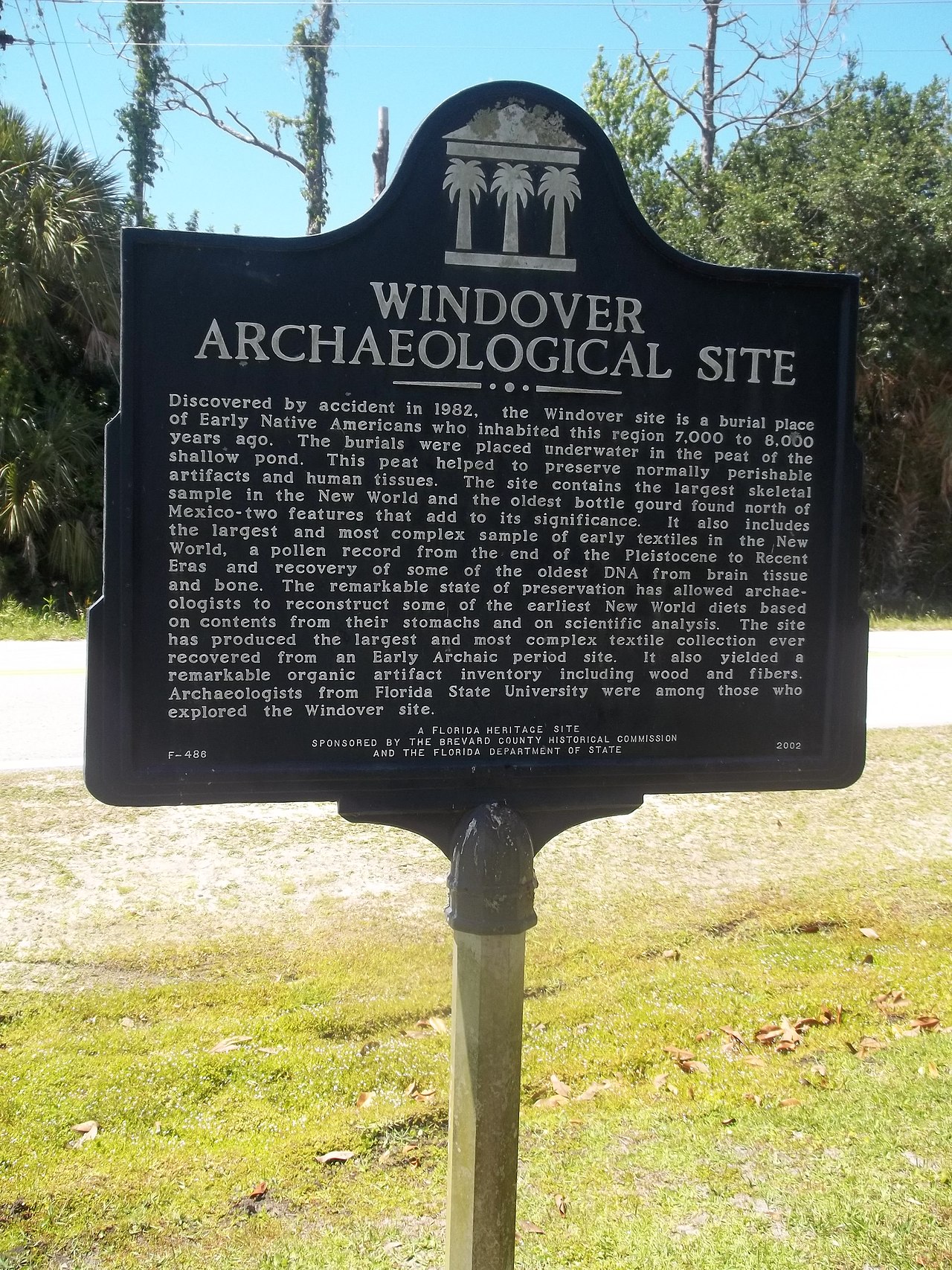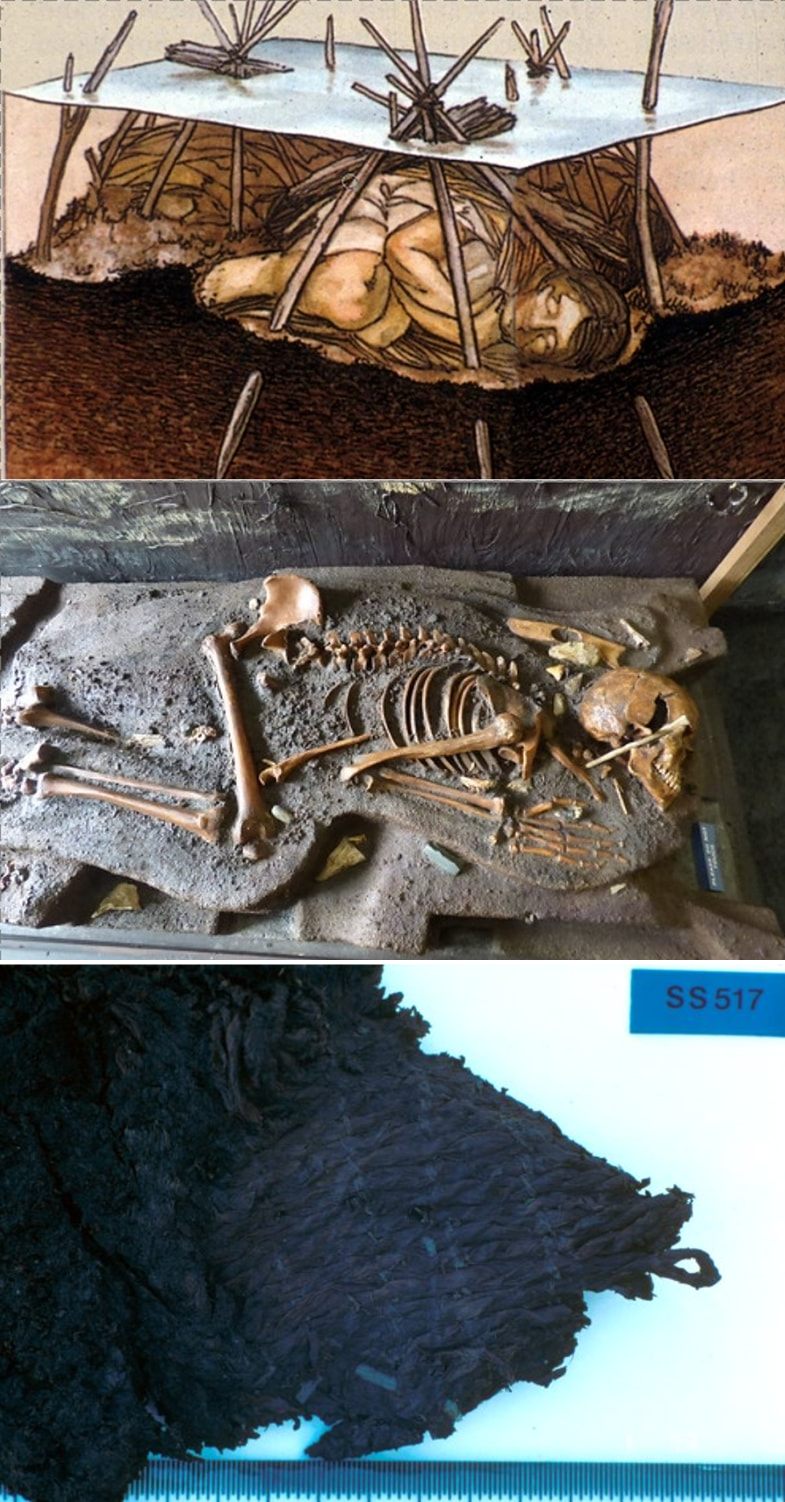Bog Bodies
"Bogs represent one of the last true wildernesses in Europe, and people have been burying things in them for thousands upon thousands of years. This has proved a boon for archaeologists, because the unique chemistry of bogs can preserve organic artifacts to an incredible degree – scarves, leather shoes, wooden cups, wolfskin capes, wagon wheels, floppy felt hats, ancient books, even twenty-pound blocks of butter.* And most spectacularly, bodies.
Over a thousand bog bodies have turned up across Europe, in at least 250 sites from Ireland to the Baltics. The oldest date back 10,000 years. Bogs preserve bodies well for a few reasons. One is the chilly weather, which rarely tops 50 degrees. The water also tends to be stagnant and lack oxygen, which inhibits the growth of maggots and putrefying bacteria. Finally, mosses in the bogs produce acidic chemicals that work their way into skin and organs, and vegetable-tan these soft tissues into something durable."
Episode: File 0156: The Bog Unicorn Tapestries
Release Date: Nov 21 2025
Researched and presented by Halli
Bog Butter
"Burying butter in bogs was surprisingly common – over 400 blocks have been retrieved. The cool, acidic water preserved butter nicely, and because people commonly paid texas in butter way back when, scofflaws could also cheat their liege of revenue by hiding them this way. A few medievalists have re-created bog butter in modern times. One of them described it as having a 'mossy, earthy aroma and a rich umami taste laced with traces of vegetal putrefaction.'" –Dinner with King Tut by Sam Kean
And there is a Butter Museum in Cork where you can see examples of bog butter.
Bogs
Bogs are unique landscapes – basically plant and moss graveyards. They're acidic, carry very little nutrients in the water, and mostly accumulate that water from rain and snowfall. They're recognized as significant habitats that often contain vulnerable species of animals and plants. For example, bogs in North America are sometimes the habitat for a butterfly called the bog copper.
So all of those factors - low temperature, lack of oxygen, highly acidic water – make preserving things in a bog ideal. Not what I expected to learn, but once I did, I was fascinated. And bog bodies, as they're colloquially known, are some of the most interesting mummies I've ever seen.
We talked in the episode on Anatomical Venuses about mummy portraits, or "hot wax painting". "The wax is heated, colored pigments are added, and the hot wax is applied to a surface like wood or canvas, and as the wax cools, tools are used to carve out the excess so only the wax adheres to the face or body part." We know mummies were common to many cultures, probably the most famous being the Egyptian mummies. And bog bodies are a type of mummy, and just like with most of these strange, eerie creations, they were often done intentionally.
"...Iron Age bog bodies show a number of similarities, such as violent deaths and a lack of clothing, leading many archaeologists to believe that they were killed and deposited in bogs as part of a widespread cultural tradition of human sacrifice, or executed as criminals." But more about that later
The oldest known bog body is the skeleton of what's called the Koelbjerg Man from Denmark, dated to 8000 BC (Mesolithic period). But the oldest bog body with flesh is the Cashel Man, dating back to 2000 BC (Bronze Age). Other well known bog bodies include the Tollund Man, Grauballe Man, and Lindow Man (all Iron Age). Bogs were often seen as liminal places connected another world or realm, which makes sense if many bog bodies were people sacrificed to appease a god or sentenced to death.
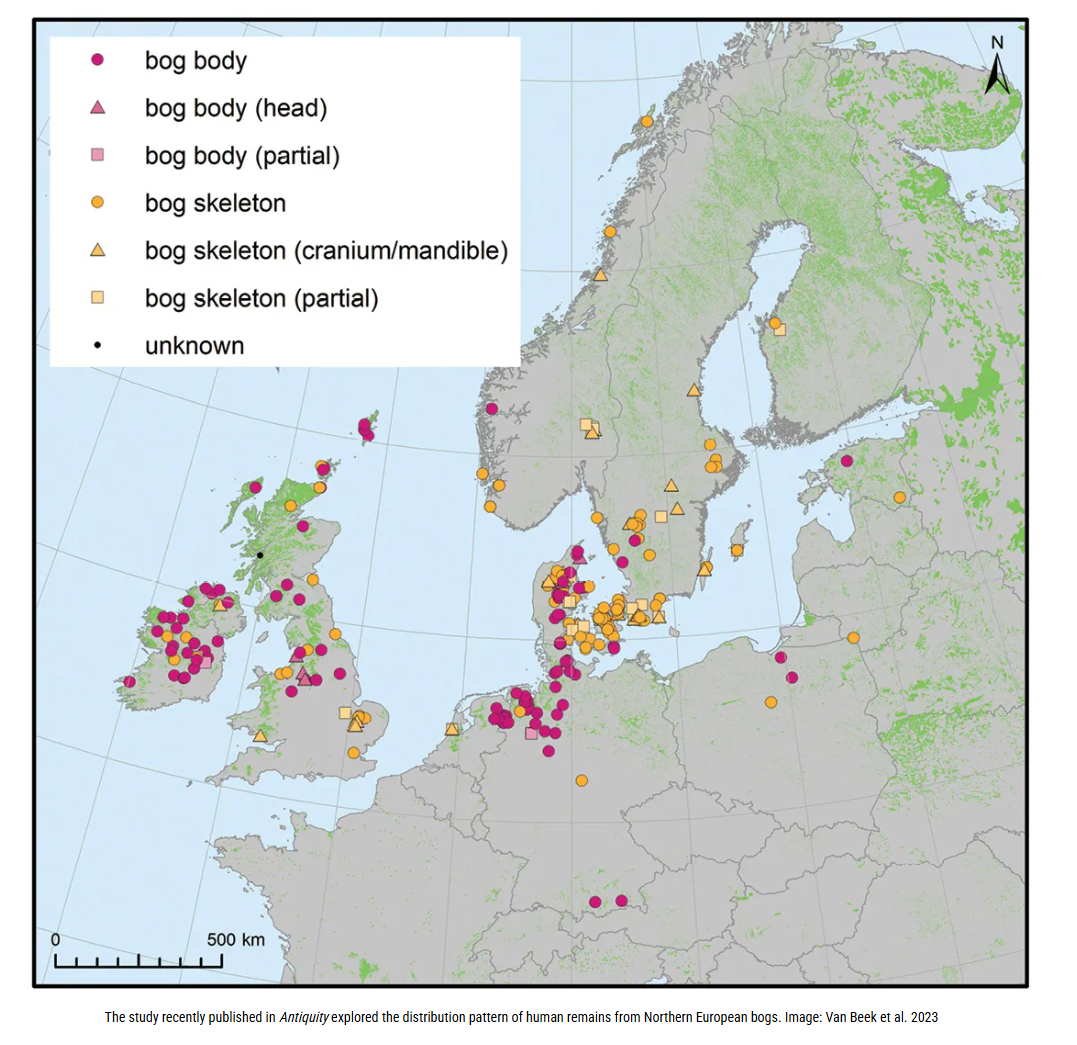
A good number of bog bodies are so well preserved that scientists can tell what they ate for their last meal. Hair, clothing, accessories, and other parts and pieces are often perfectly preserved as well.
I should note that most of the hair found on bog bodies is a shade of red - this is not often their natural color, since the chemical reaction of the hair in the acidic bog water causes this change. I also want to note that bog bodies are still being found, especially as climate change impacts water levels and temperatures. And not all bog bodies are ancient - pristine bodies of Russian soldiers killed in World War II were discovered in Polish bogs in the 1990s.
Let's do a quick rundown of what we know about some of the most famous bog bodies:
Yde Girl
Found in 1897
Era lived: between 54 BCE and 128 CE
Estimate age at death: 16
Found near the village of Yde, Drenthe in the Netherlands, found by two peat cutters
Cause of death: strangulation
Found with a woolen band around her throat; also had a stab wound from a knife near her left clavicle
Part of her head had been shaved, which is an indication she was sacrificed
Of note: a CAT scan revealed she suffered from scoliosis and probably had a crooked gait. She was found buried with a large woolen cloak
Where to find her now: the Drents Museum in the Netherlands
Weerdinge "Couple" or Weerdinge Men
Found in 1904
Era lived: 160 BCE to 220 CE
Estimated age at death: unknown
Found in the Bourtanger Moor in the Netherlands
Cause of death: the larger body (male), has his arm under the body of a slighter figure (also male); larger figure was stabbed on the left side of the chest and his intestines were protruding from the wound. Smaller man's cause of death is unknown.
Of note: at first it was assumed the bodies were male and female, but further study indicates they were both male. Some have speculated they were punished for being gay.
Where to find them now: the Drents Museum in the Netherlands
Elling Woman
Found in 1938
Era lived: early Iron Age, about 280 BCE
Estimated age at death: 25
Found in Bjældskovdal bog, near Silkeborg, Denmark
Cause of death: hanging
A rope made of skin was found with the body and there was a "clearly visible furrow around the neck"
Of note: her finely braided hair is still very visible; also a mystery that her body was found some 200 feet away from another famous bog body, the Tolland Man
Where to find her now: Silkeborg Museum in Silkeborg, Denmar
Koelbjerg Man
Found in 1941
Era lived: 8,000 BCE
Estimated age at death: 25 or slightly younger
Found near Odense, Denmark
Cause of death: unknown, guessed to be drowning
Of note: this is the oldest known bog body to date. Only a skull and several bones were found but no sign of a violent death. Thought to be a woman until 2016 when DNA analysis proved otherwise.
Where to find him: The Møntergården Museum in Odense, Denmark
Tollund Man
Found in 1950
Era lived: about 280 BCE - early Iron age
Estimated age at death: 30-40 years old
Found near the Elling Woman in the Bjældskovdal bog, near Silkeborg, Denmark
Cause of death: hanging, but death caused by suffocation only, not the typical suffocation and broken neck combo
Of note: Is the best preserved body of all the ones found to date; only hands and arms are skeletal. Clothing either disintegrated or he was buried wearing only a pointed cap made of sheepskin and an oxhide belt
Where to find him now: Silkeborg Museum in Silkeborg, Denmark
Grauballe Man
Found in 1952
Era lived: early Iron Age
Estimated age at death: mid-30s
Found in the Nebel Mose bog, close to Silkeborg
Cause of death: throat cut from ear to ear
Of note: hands and feet are well preserved, as is his face; he is one of the most examined bog bodies and is believed to have been sacrificed to a fertility goddess after a bad harvest.
Where to find him now: Moesgaard Museum in Denmark
Lindow Man
Found in 1984
Era lived: radiocarbon dated to 2 BCE-119 CE
Estimated age at death: 25
Found in the Lindow Moss in northwest England
Cause of death: particularly brutal, as he was hit twice on the head, garroted, and had his jugular vein severed
Of note: wore a fox-fur band on his left arm but was otherwise naked; was well-groomed, with his hair and beard trimmed by shears and fingernails well kept and filed
Where to find him now: the British Museum
There are other famous bog bodies, but these are the ones that caught my attention. You can also look up the Clonycavan Man, found in 2003, who was strangled, stabbed, struck on the head three times and on the chest once with an axe, then disemboweled. Or the Old Croghan Man, also found in 2003, and died by strangulation, stabbing, and had holes cut in his arms through which wreaths of twisted hazel were threaded. Also fascinating about both these figures is that one scholar noted they both had their nipples cut off, and that "sucking a king's nipples was a gesture of submission in ancient Ireland". The brutal removal of the nipples may be an indication that the two were either failed kings or failed candidates for a throne.
If we leave western Europe for North America, we find bog bodies here, too. In Brevard County, Florida, there is a site known as the Windover Archeological Site, dating to roughly 8,000 to 10,000 BCE and is now a National Historic Landmark. Windover is a muck pond (similar to a bog, think Floridian swamp) where the skeletal remains of 168 individuals were found buried in the peat at the bottom. The peat kept the skeletons well preserved and archeologists were able to even uncover brain tissue from 91 of the skulls. This collection of remains and artifacts represent "among the largest finds of each type from the Archaic Period".
The Windover site was found in 1982 when a road was being built across the pond for a new housing development called Windover Farms. A backhoe operator noticed skulls in the bucket of his machine, the police were called, and when it was determined that the skulls were not modern, archeologists were called in. In 1984, Florida approved the site to be excavated.
What they found was startling: bones ranging in age from infant to about 60 years old, with children making up about half the remains. The skeletons showed evidence of disease and healed wounds, and many of the children had evidence of interrupted growth (due to disease and/or malnutrition). The adults of both sexes showed evidence of osteoarthritis, and osteoporosis was clear in the older women. Some skeletons showed wound patterns that would indicate a violent death; one male pelvis had a bone spear point embedded in it while others had severe skull fractures.
While some of the remains were all mixed together, there were about 100 undisturbed skeletons that were found intact. Most of the skeletons were buried "in a flexed position, on their left sides, with their heads toward the west". And the bodies were held down in the graves with sharpened stakes. Thirty-seven of the bodies were wrapped in woven fabrics.
Most fascinating to me is what was found in the brain matter: "DNA indicated that the Windover peoples' DNA carried genetic markers that link them to ancient populations of Asia" and that "They do not match any native populations alive in North America today". DNA also showed familial relations, that one family had used the site as a grave for over a century.
Given the discovery of the Windover site and many others in Florida with underwater burials in peat, it has completely changed how historians and archeologists view the Archaic period in that area. The Windover site is considered to be "one of the most significant archaeological sites ever excavated".
Full Source List
- https://samkean.com/books/dinner-with-king-tut/extras/photos/ [warning link contains images of human remains and animal organs used for the purpose of preserving leather using traditional methods]
- https://thebuttermuseum.com/
https://www.smithsonianmag.com/science-nature/europe-bog-bodies-reveal-secrets-180962770/
https://education.nationalgeographic.org/resource/bog-bodies/
https://www.britannica.com/list/9-noteworthy-bog-bodies-and-what-they-tell-us
https://www.whetstonemagazine.com/journal/what-we-do-and-dont-learn-from-bog-bodies
https://www.smithsonianmag.com/smart-news/a-brief-history-of-bog-butter-180959384/



